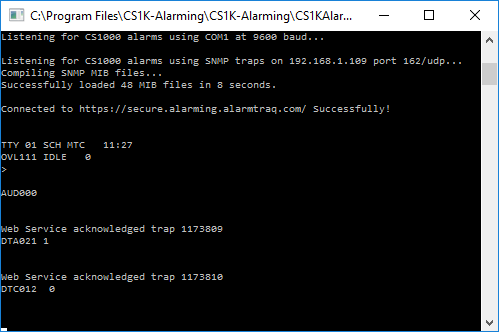Nortel CS1000 Secure Alarming over HTTPS
Secure remote alarming over HTTPS for Nortel CS1000 and SL-100 systems
The CS1000 Alarming Gateway sends alarm messages to an HTTP Server instance, using an HTTPS (HTTP over SSL) transport protocol. As a result, all communication takes place over a secure SSL link. Alarm messages sent to the HTTP Server and responses received are encrypted, which prevents unauthorized users from seeing any sensitive information exchanged between server and client. The use of SSL is transparent to the SOAP transport of a Web service.
The CS1000 Alarming Gateway runs as a Windows service on a micro-PC, desktop or virtual machine located on the customers site and connects either directly to the TTY port on the switch using a standard serial (COM) port or via SNMP trap message. Once installed the service listens on the serial (COM) port and/or SNMP (port 162/UDP) for error codes and when detected, compares the data with a predefined list of alarm codes to be ignored (AUD000, TIM000, etc…).
Version 2.0 (6/25/2019) includes several improvments including
- Use of wildcards in the alarm filters
- Supports alarming from multiple Call Servers, Signaling Servers, and Media Gateways via SNMP
- New Service monitor window to verify operation in real-time

Secure remote alarming over HTTPS for Nortel CS1000 and SL-100 systems
click to view larger image
Nortel CS1000 Alarming Gateway (11 minutes)

Runs as a Windows service
Alarm Filters
Provides a customizable list of alarm codes and error messages that should be filtered which prevents excessive or unwanted alarm
codes from being processed. If an alarm code matches an entry in the filters table it will be ignored (AUD000, TIM000, etc…).
In the example below, An entry of CSC will filter all CSCxxx messages while an entry of CSC1 would filter all CSC1xx messages

Alarm Filters

Connects via TTY port on switch

Secure alarming via HTTPS or SNMP Trap
To customize the server's configuration, contact AlarmTraq sales at 1-800-394-2173
